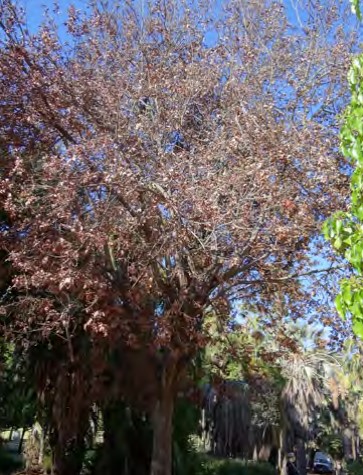Read about a B3 project to prepare for a Xylella incursion – profiled in Manaaki Whenua Landcare Research’s latest Pūtaiao Magazine
Ronny Groenteman is leading B3 research to better prepare New Zealand for an
incursion of the devastating bacterial plant pathogen Xylella fastidiosa.
Almost a decade ago Ronny and her Manaaki Whenua colleagues collected samples
from New Zealand native trees growing in botanic gardens in California, where
Xylella has devastated a wide range of crops such as citrus and grapevines. They
found Xylella present in these offshore natives, but not always causing disease
symptoms.
To solve this mystery and help New Zealand prepare for a possible
Xylella incursion, Ronny and the B3 team are sourcing samples of the same
natives in California again to sequence the pathogen subtypes and their relative
effects on our taonga plants.

Tītoki, Alectryon excelsus, standing dead following attack by Xylella fastidiosa. Balboa Park, San Diego.
The research makes use of an international network
of botanic gardens, called the sentinel plant network, whereby the impact of
biosecurity threats can be studied on our plants offshore.
The researchers will also try to develop a test to quickly determine the subtype of Xylella from a
small quantity of genetic material. This will help agencies such as MPI to quickly
adjust their response to an incursion based on the subtype information.
Another B3 project is looking at insects present in New Zealand, both native and exotic,
that can spread Xylella and their movement between sensitive crops and the
surrounding vegetation.
For more information about the Xylella and sentinel plant network project, contact: [email protected]
